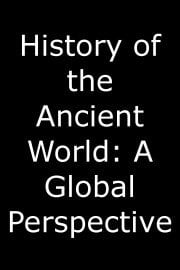
In episode 34 of History of the Ancient World: A Global Perspective, titled Early Americas: Resources and Olmecs, viewers are invited to explore the rich and complex tapestry of ancient civilizations that flourished in the Americas before European contact. This episode delves into the early societies that emerged in Mesoamerica, focusing specifically on the Olmec civilization, often regarded as the "mother culture" of later Mesoamerican societies.
The episode opens with a sweeping view of the diverse landscapes of the ancient Americas, highlighting how geography and climate played pivotal roles in shaping societal development. From the lush jungles to the arid deserts, these environments were home to a vast array of natural resources that influenced early inhabitants' food sources, commerce, and cultural practices. As the episode unfolds, it examines how access to vital resources like water, fertile land, and stone contributed to the emergence of complex societies, trade networks, and social hierarchies.
Viewers are introduced to the Olmecs, who thrived along the Gulf Coast of Mexico from around 1200 to 400 BCE. This civilization is notable for its monumentally carved heads, intricately designed jade artifacts, and sophisticated agricultural practices. The episode investigates the Olmec's innovations in agriculture, particularly their creation of raised-field farming techniques, which allowed them to cultivate crops such as maize, beans, and squash in their humid tropical environment. This agricultural prowess not only ensured food security but also laid the foundation for sizable population centers.
As the episode continues, the narrative shifts to the Olmec's social structure, examining how their political organization and religious beliefs interwove with their daily lives. The Olmecs are portrayed as a society where spirituality and governance were intertwined, with the ruling elite often acting as intermediaries between the gods and the people. Viewers will learn about the significance of ritual practices, including the use of bloodletting and the performance of elaborate ceremonies, which were essential in maintaining social cohesion and reinforcing the power of the elite.
One of the episode's highlights is its exploration of the Olmec's influence on later civilizations in Mesoamerica, such as the Maya and the Aztecs. The segment emphasizes how the Olmecs set precedents in art, writing, and calendrical systems that would resonate through the ages. The episode illustrates how the Olmec civilization, despite its eventual decline, sowed the seeds for advancements in science, mythology, and cultural identity that deeply influenced successive societies.
The two-part structure of the episode allows for a detailed examination of the material culture of the Olmecs. As viewers are taken through various archaeological findings, they will gain insights into the everyday lives of Olmec people, including their housing, clothing, and trade networks. This segment showcases the extensive trade routes that connected the Olmec with neighboring cultures, facilitating the exchange of goods, ideas, and technologies. Unique Olmec artifacts such as the famous colossal heads and intricate ceramic figures reveal the sophistication of their artistry and the symbolic meanings embedded within their craftsmanship.
Throughout the episode, expert historians and archaeologists provide commentary that enhances the viewer’s understanding of the Olmec civilization's complexity. These insights help to draw connections between the Olmecs and other ancient cultures, highlighting universal themes such as the importance of resource management, social organization, and cultural exchange.
In addition to the focused exploration of the Olmecs, this episode enriches the broader narrative of the Early Americas by situating the Olmec civilization within the context of their contemporaries. The program contrasts the Olmecs with other emerging cultures of the time, providing a panoramic view of Mesoamerican development. This comparative approach sheds light on the unique contributions of the Olmecs while acknowledging the diversity and dynamism of early American societies.
As the episode concludes, viewers are left with a deeper appreciation for the Olmecs and their role in the prehistoric Americas. Early Americas: Resources and Olmecs is not just a study of a single civilization; it represents a vital chapter in the broader narrative of human ingenuity, resilience, and cultural evolution. This episode serves as a testament to the significance of the Olmec civilization and invites audiences to consider the profound impact of geography, resources, and innovation that shaped the lives of ancient peoples across a vast and varied landscape.
Join us on this enlightening journey to uncover the legacy of the Olmecs and their influence on the development of subsequent civilizations within the rich fabric of ancient America.
-
Genres
-
Channel
-
First AiredDecember 16, 2011
-
Content RatingTV-PG
-
Runtime29 min
-
LanguageEnglish

-
 Watch Unlimited Prime Video TV Shows
Watch Unlimited Prime Video TV Shows
-
 Anytime, Anywhere
Anytime, Anywhere
-
 Ad-free Videos
Ad-free Videos


 Watch Unlimited Prime Video TV Shows
Watch Unlimited Prime Video TV Shows
 Anytime, Anywhere
Anytime, Anywhere
 Ad-free Videos
Ad-free Videos























